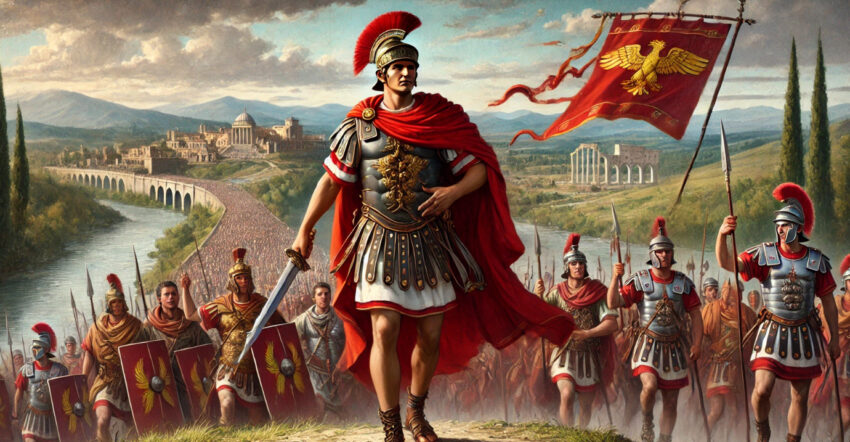The March on Rome and the Pursuit of Pompey
After crossing the Rubicon in January 49 BC, Julius Caesar wasted no time in advancing towards Rome. His decision to march on the capital was as much a psychological maneuver as it was a military one. By acting quickly, Caesar sought to capitalize on the element of surprise and the disorganization among his enemies. The Senate, caught off guard by Caesar’s boldness, was unprepared for an immediate confrontation. Pompey, who had been entrusted with defending the Republic, found himself scrambling to respond.
Caesar’s army moved swiftly, encountering little resistance as it advanced southward. Towns and cities opened their gates without a fight, and many soldiers in Italy, rather than opposing Caesar, defected to his side. Caesar’s reputation as a brilliant commander, combined with his policy of clemency towards his enemies, earned him both support and obedience. The Senate, meanwhile, was in a state of panic. They had expected Caesar to be intimidated by the Senate’s demands and Pompey’s status, but now faced the reality of a full-scale civil war.
Faced with Caesar’s advancing forces, Pompey made the strategic decision to abandon Rome rather than attempt a defense. He had significantly more troops at his disposal than Caesar, but they were spread across the Republic’s provinces, and not all of them were battle-ready. Pompey’s strategy was to withdraw to the east, regroup, and assemble his legions in Greece, where he could use his superior numbers and naval strength to outmaneuver Caesar. In contrast to Pompey’s cautious approach, Caesar’s tactics were aggressive and rapid. This difference in strategy would characterize much of the civil war to come.
By mid-March of 49 BC, Caesar entered Rome unopposed, marking a significant victory in the early stages of the conflict. Although he took the city without bloodshed, his march on Rome symbolized the beginning of the end for the Roman Republic as it had been known. Caesar’s forces had secured the heart of Roman power, but the war was far from over. His next move would be to pursue Pompey, whose withdrawal to Greece signaled the beginning of a protracted and dangerous campaign.
Caesar knew that in order to secure his position, he needed to eliminate Pompey, the Senate’s leading general, whose reputation and resources made him Caesar’s most formidable opponent. With little time to consolidate his control in Rome, Caesar prepared to chase Pompey across the Adriatic Sea. His strategy involved securing the loyalty of Rome’s western provinces and using their resources to launch a military campaign in Greece.
In a brilliant display of speed and logistical skill, Caesar crossed into Greece by early 48 BC, determined to bring Pompey to battle. While Pompey had the advantage of a larger, more experienced army, Caesar’s forces were hardened by years of campaigns in Gaul and led by a commander whose boldness was matched only by his military genius. The pursuit of Pompey marked the beginning of one of the most decisive chapters in Roman history, as two of the Republic’s greatest generals prepared for a confrontation that would shape the future of Rome.
 |
 |
 |


